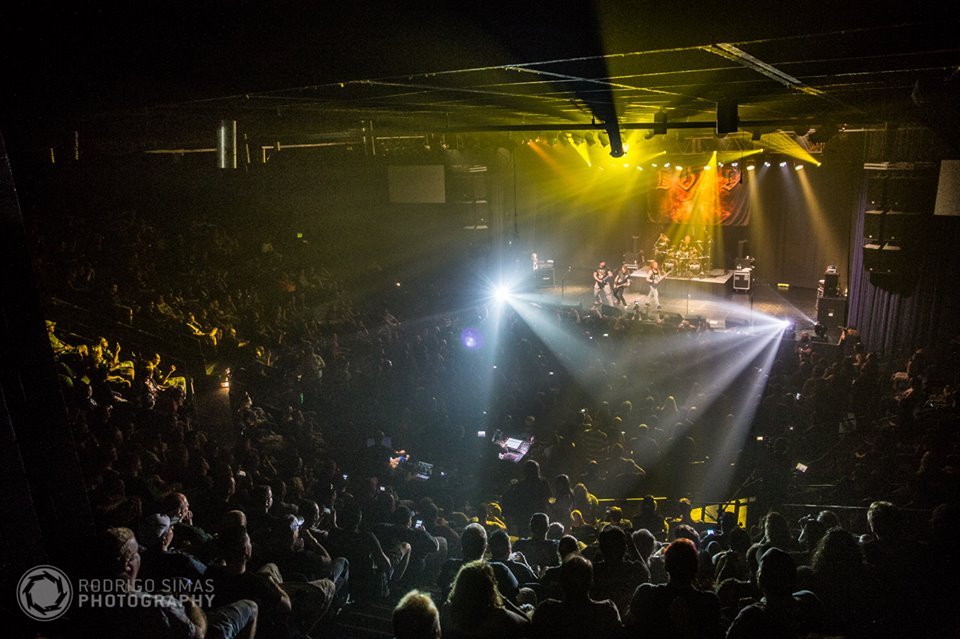-
Posts
2,816 -
Joined
-
Last visited
-
Days Won
8
Community Answers
-
Lord Tim's post in Can you dock the Tempo panel in MultiDock? was marked as the answer
Yeah, the Tempo View was originally down in the Multidock but I always found that kind of clunky. They've moved that view over to a tab in the Inspector, and introduced a Tempo Track, which is MUCH better for visualising where the changes are:
Plus new curve types between tempos as well.
This is a fairly simple song as an example, but I've done some pretty nutty prog songs with a lot of tempo and meter changes and this has been a huge workflow improvement for me. If we can get the Meter view shifted over to the Inspector and a Meter Track similar to the Tempo Track brought in, I would be a happy man.
-
Lord Tim's post in [SOLVED] What Did I Do - To My Track View? was marked as the answer
You can see on each clip in the top right hand corner that they have AudioSnap information in them (see the little dot with the vertical line through it?). It's likely at some point you changed to Audio Transients in the edit filter and something was nudged or changed.
Those grey clips should be the same coloured clips as all of the rest which vibes with what @reginaldStjohn said - this is in Audio Transient mode for that track. Change it back to Clips in the Edit Filter drop down box.
-
Lord Tim's post in how to phrase my problem to find an answer in the forums was marked as the answer
First of all, don't use ASIO4ALL. This interface comes with ASIO drivers which are the correct and best ones to use. ASIO4ALL is kind of a stop-gap wrapper for devices that don't have proper ASIO drivers, and not a great one at that. The rule is, if there's a native ASIO driver, always choose that first*.
Exit out of Cakewalk, then go and uninstall ASIO4ALL.
Make sure your 22VSL is unplugged.
Go here and download the Universal Control app: https://www.presonus.com/products/AudioBox-22VSL/downloads
Install that, then plug your 22VSL in, and it should detect OK and make the driver available.
Start Cakewalk, and go to Preferences > Playback and Recording and make sure Audio / Driver Mode is set to ASIO, then go to Audio / Devices and put ticks in the boxes for your 22VSL. There's a good chance this will already just be set up and ready to go, but it's worth checking this stuff.
Exit out of Preferences and you should be good to go.
EDIT: * The one exception to the "always choose ASIO first" rule is if you're using an onboard Realtek sound interface. The ASIO driver for that is utter garbage, and people should use WASAPI for that. But for any good audio interfaces, such as the 22VSL, ASIO is definitely the best thing to use.
-
Lord Tim's post in Why Is Audio Track Now Recording Mono? was marked as the answer
You're overthinking this a little, it's actually fairly simple if you think of stuff as tasks rather than big chunks.
Task 1 is to record:
Arm your track, do your performance. If you have effects in the bin already, great, but it's not time to focus on that. Chop up the vocal as needed, choose the best takes, etc. etc. All of the things you'd ordinarily do for a recorded take.
Task 2 is to polish it:
Right-Mouse Button + Drag around all of the vocal clips you want to tune to select them, then Right-Click on of them and do Region FX > Melodyne > Create Region FX. This will open up Melodyne in the Multidock. Edit as you see fit - you'll likely have a lot more control over the performance this way rather than putting it in the FX Bin. When you're done, you'll see you have one big clip with the Melodyne Region FX on it. Right Click that clip and choose Bounce to Clips to lock off all of your Melodyne edits.
Task 3 is to choose the effects for the track:
Add any effects you like in the FX Bin, adjust to taste.
Task 4 is to freeze the track if you want to save CPU resources, by clicking the little * icon on the track header.
If you want to add any more recordings to that track, unfreeze the track first, and then record the new part. And then go through the above steps again for the new recordings: Choose your takes and edit it as you see fit, then select all of the new recorded parts and add Melodyne and polish the performance, then bounce this new part to a clip, and then simply re-freeze the track.
Freezing should really be a last step thing though, so you can probably save a few mouse clicks by leaving that until you're ready to sign off on the track entirely (but with the advantage still leaving yourself the option of un-freezing if you want to in the future, of course).
Tips: Rather than Right-Clicking your clips and popping up a menu to add Melodyne, it's usually mapped to CTRL+M. I've also set up a custom key binding to make CTRL+B Bounce to Clips, which saves me doing a popup menu for that.
On paper this sounds like a bunch of extra steps, but once you get the workflow down, it goes really fast, and you have the added piece of mind that you won't end up with deleted takes or clips doing weird stuff. The tasks are their own checks and balances.
-
Lord Tim's post in Is Cakewalk A Songwriting Platform? was marked as the answer
Yeah, Ripple Edit is definitely a HUGE step up from the old Delete Hole method, which was really hit and miss, especially if you had automation in buss tracks. The new Tempo Track is another really nice improvement too, because it's visually right above your project and you can do much finer control of gradual changes than you could do in the old Tempo View.
Additionally to that, setting up Workspaces and Screensets are really handy for focussing your workflow towards writing rather than editing or mixing, there's Articulation tracks now for easily transforming the sound of instruments, and a lot of new features in the Piano Roll View too.
There's definitely stuff to be done yet in some areas of course, like in all DAWs - every one has strengths and weaknesses - but the last few years has seen a LOT of improvements since the SONAR days in regards to songwriting and arranging.
-
Lord Tim's post in How do I delete a patch point? was marked as the answer
I have a vague memory of there being some garbage collection when closing a project when it comes to orphaned patch points. Does that ring a bell for anyone?
-
Lord Tim's post in Automation Envelope Editing [Solved] was marked as the answer
Or, make 4 nodes, and in the section you want lowered, hold down CTRL while you drag down on the automation line and it'll move the entire section.


